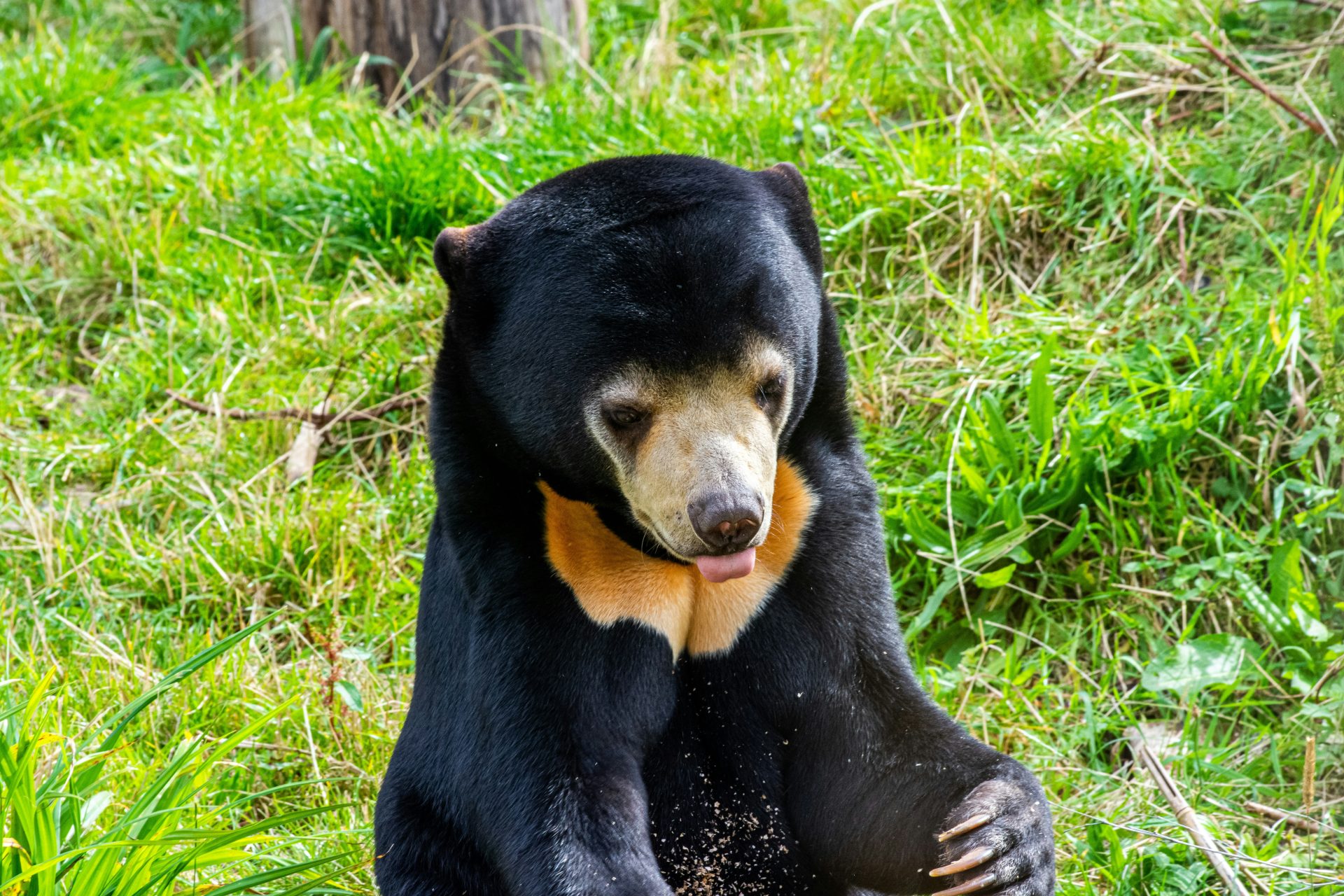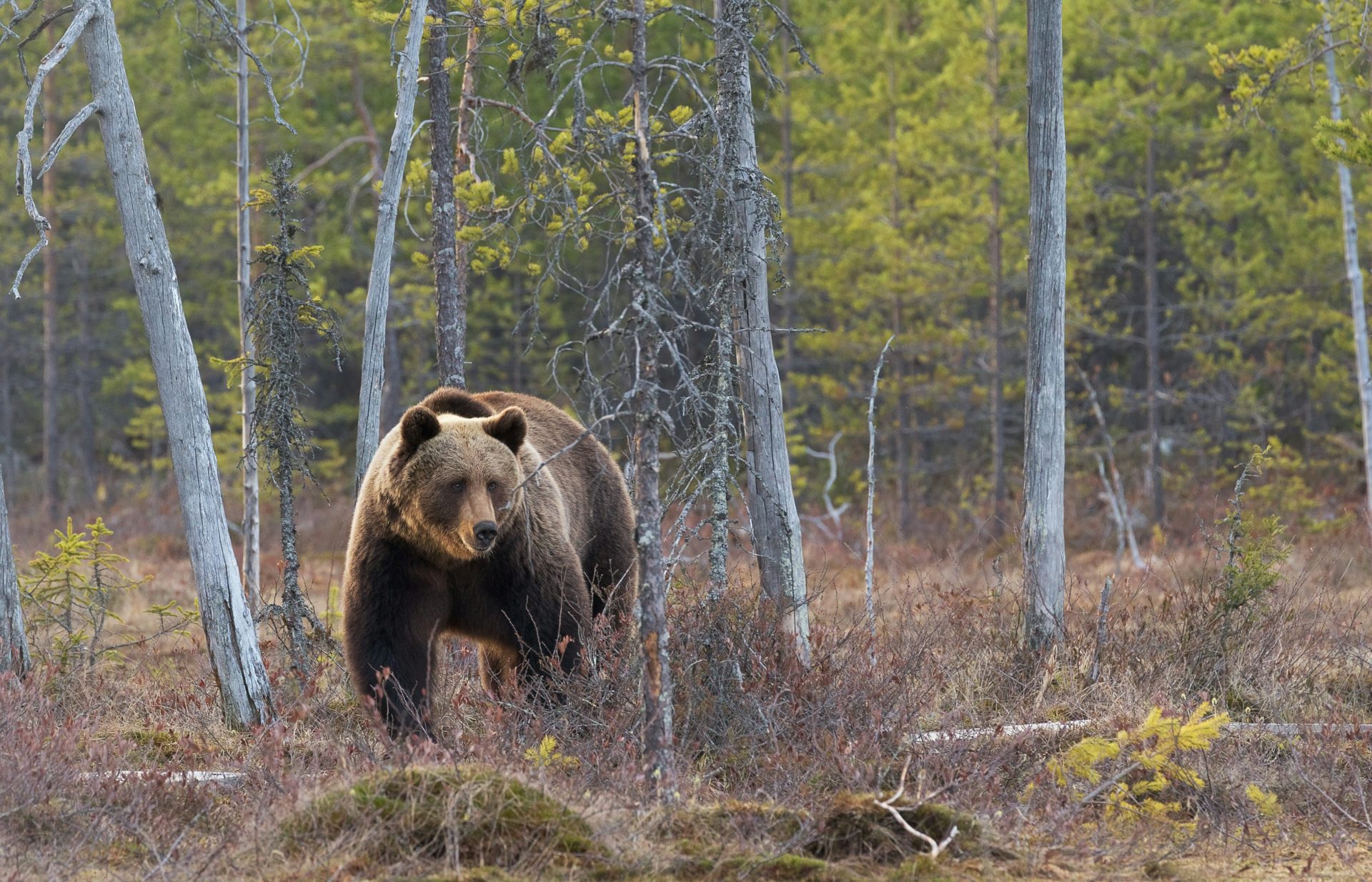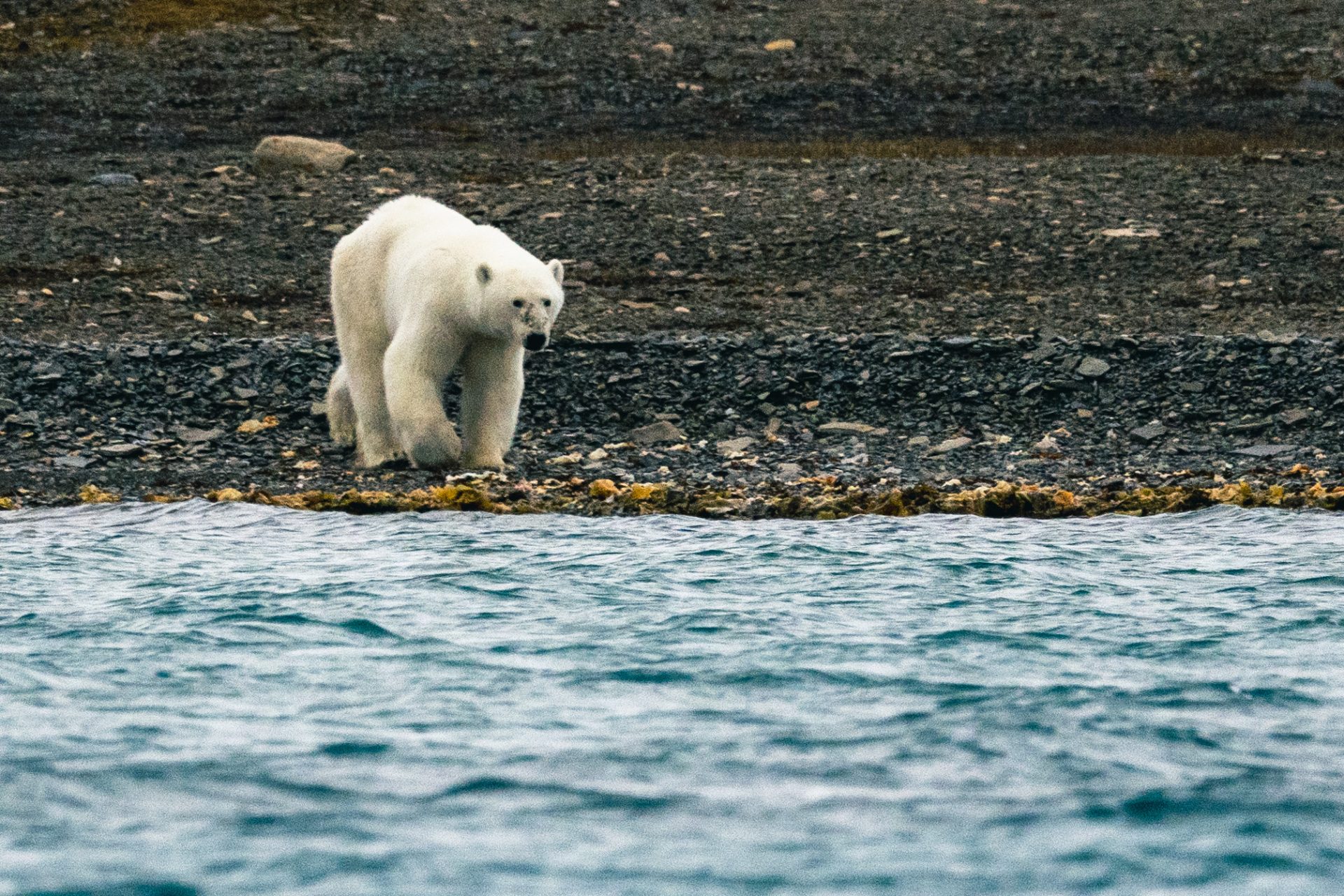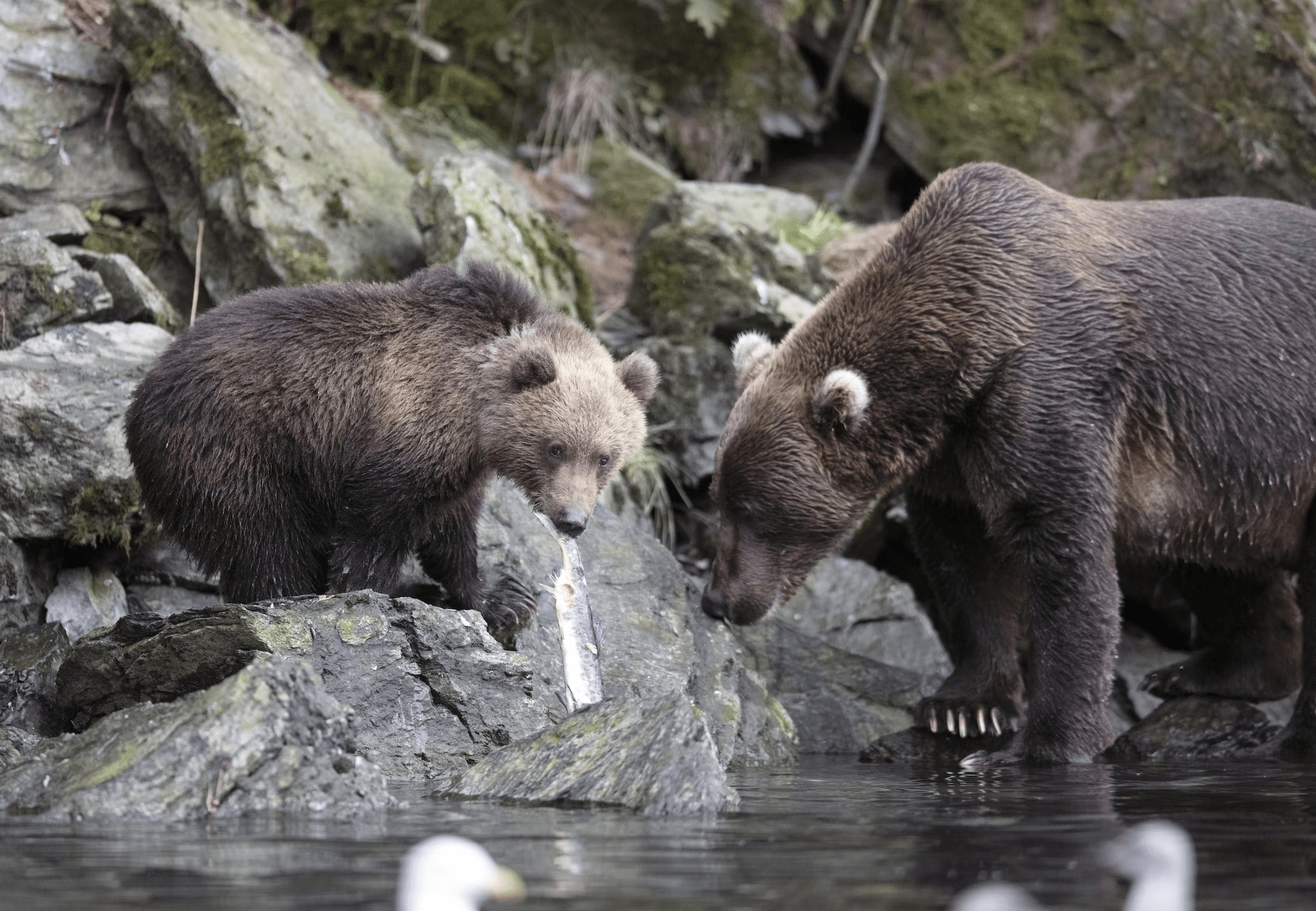Bear watching is undoubtedly one of the most thrilling wildlife experiences. From their characterful faces and remarkable behaviours to the breathtaking landscapes in which they are found, bears are always a highlight for any wildlife enthusiast.
Globally, there are eight species of bear (and a number of subspecies) and in this enews, we will reveal where in the world you can see seven of them. We also suggest some of our most popular bear watching holidays which will offer you the best chances to view and photograph your target bear species in their natural habitat.

Sun Bears in Borneo
The smallest bear species in the world, sun bears are found across much of South-east Asia and weigh less than most humans at only 27-65 kg. Their diet primarily comprises almost exclusively of insects, fruit and honey (they are also known as honey bears). The name sun bear refers to the yellow crescent on their chests which resembles the rising sun. They are highly arboreal and easily able to climb tall lowland rainforest trees in search of fruit and insects, but are also known to build large nest platforms for resting.
One of their closest cousins is the larger Asian black bear or ‘moon bear,’ which has similar crescent chest markings in white, and is widely distributed across Iran, Pakistan, Japan, the Himalayas, Afghanistan, China, Vietnam and Thailand.

Eurasian Brown Bears in Finland
Once widespread across Europe, today the brown bears’ territory spans mountainous and woodland areas across northern and eastern regions of the continent, with significant populations in Russia’s Siberian forests, the Carpathian Mountains of Romania, the Dinaric Alps of Slovenia and the taiga forests of Finland. Brown bears are a solitary, thick-furred species. They hibernate in the winter months and feed on plant roots, fruit, small mammals, fish, insects and carrion.
Andean Bears in Colombia
Also known as ‘spectacled bears,’ due to the characteristic rings of lighter-coloured fur around their eyes. Andean bears are the only bear species found in South America and favour Andean cloud forest and paramo (alpine grasslands) habitats. They are excellent climbers and their preferred diet is largely plant-based (fruit, cactus and bromeliad hearts), but they will occasionally eat rodents or birds. Famously, they are also the inspiration for the marmalade sandwich-loving Paddington Bear.

Polar Bears in Svalbard
The mighty polar bear is the largest of all the bear species, with males weighing up to 800 kg! They are excellent swimmers and prolific hunters, feeding mainly on ringed and bearded seals. These apex predators are superbly adapted to their frozen habitat and use their sense of smell to locate seals when they surface through breathing holes in the ice. Their Latin name Ursus maritimus means ‘sea bear’ as they live on the sea ice around Alaska, Canada, Greenland, Russia and the Norway-owned archipelago of Svalbard.

Grizzly and Black Bears in Canada
Grizzly bears and black bears are omnivores native to North America. Around half of the global population is found in British Columbia; they live in a range of habitats from forests and mountains to coastal and wetland areas. The biggest bears tend to exist in areas which are rich in food sources, such as coasts or rivers where they can fish for salmon. The smaller and more widespread American black bears are found in forested mountainous regions across Canada, Mexico and North America. They are less adept hunters and feed predominantly on plants, although these opportunistic mammals will feast on whatever food source they can find.
Sloth Bears in the Indian Subcontinent
Sloth bears are native to deciduous forests and grasslands on the Indian subcontinent (India, Sri Lanka, Bhutan and Nepal). Despite being one of the smaller species of bear, sloth bears are well-equipped to protect themselves from predators, including tigers. Their well-adapted claws are more than a defensive tool, the bears also use them to open insect mounds or knock beehives from trees, while their long tongues allow them to consume numerous termites and other insects. The loveable character Baloo in Rudyard Kipling’s novel ‘The Jungle Book’ is based on a sloth bear.



